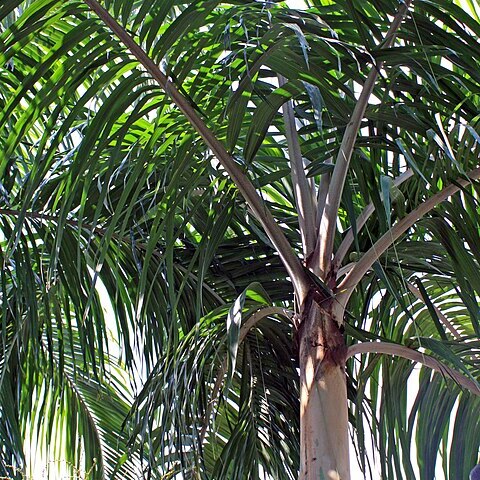Palm to 30 m tall; trunk to 25 cm diam. Leaves to 4 m long, with recurved apex; leaf sheath elongate, grey green. Pinnae 55–70 each side of rachis, to 60 cm long, dark green on adaxial surface, lighter green abaxially. Inflorescence to 1.5 m long; axes cream green; rachillae semi-pendulous, moderately flexuose. Perianth cream. Staminate flower bullet-shaped in bud, to 10 mm long; pistillode bottle-shaped, elongate. Pistillate flower to 6 mm high. Fruit to 20 mm diam.; mesocarp fleshy, with fibres appressed against endocarp. Seed globose, to 15 mm diam.

